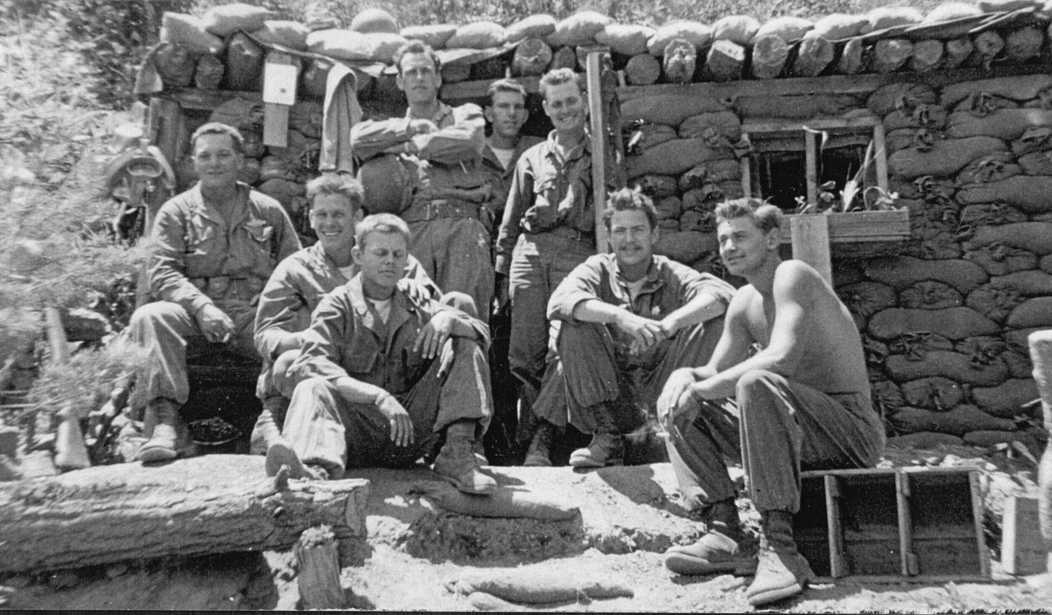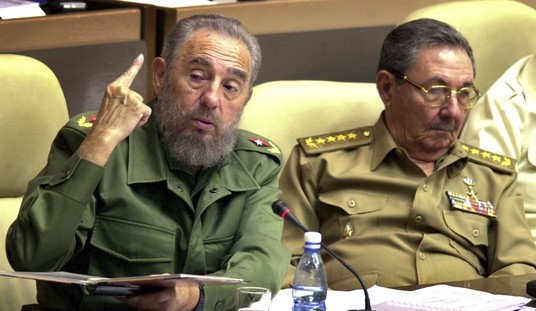It has been almost exactly 70 years since my father was assigned to a two-man bunker overlooking an anonymous ridge on the 38th Parallel in Korea. The purpose of these outposts was to act as a trip-wire in the event of a mass attack of Chinese troops. Several weeks prior to June 1951, members of Dad’s battalion had been ambushed while patrolling the front, an ambush that cost the lives of several Army soldiers. But they served their purpose: to alert the battalion bivouacked a quarter-mile behind the line.
Corporal Ellis is 93 years old, in home hospice care now, and he’s telling stories. Some he has told many times, and some he has never told before. As America looks to the future and calibrates the implications of a different kind of Chinese advance, my father is looking back.
The year had been a tumultuous one. News came on April 11 that President Harry Truman had relieved General Douglas MacArthur of command in Korea for insubordination and his unwillingness to prosecute a limited war. The storied WWII general was replaced by General Matthew Ridgeway. On April 2, the (Chinese) People’s Volunteer Army launched major attacks against Seoul, the South Korean capital, and, after heavy casualties on both sides, had been repulsed by allied UN and U.S. troops.
By the time of my father’s June deployment in the bunker, the Parallel was mostly quiet, the Korean War having devolved into a stalemated entrenchment with ongoing peace talks. But every now and then the crack of rifle fire would pierce the quiet. One such night, Dad recognized bursts from a Browning Automatic Rifle. They’d issued him one in boot camp for his 6’ 3″ stature and experience as a boy hunter in Wyoming.
The morning after he and his bunker-mate were alerted by the flurry of fire, Dad awakened with a start. The teams in the bunkers alternated the late-night watches; Dad had bedded down at 2 a.m. and awoke suddenly to full daylight. His partner had atypically not roused him from tenuous frontline sleep.
He pulled on his combat boots, picked up his Browning, and walked toward daylight at the entrance to the bunker. Something was horribly wrong at the parapet of the position. Not yet fully awake, Dad raised his rifle and tried to make sense of it.
A Chinese soldier in a familiar gray pajama uniform and cap with ear flaps knelt forward against the sandbags, a silent sentinel watching the misty ridge. His Soviet-issue German Karabiner 98k rifle was aimed out into no man’s land. For a long moment, Dad stood, wondering about his partner, and pondering how an enemy combatant had taken his post without first dispatching him.
Slowly it dawned: the Chinese soldier was dead. Laughter came from a copse of trees behind the bunker. His bunker-mate was coming down with a group of soldiers.
“Bastards,” said Dad, smiling and shaking his head.
After depositing the dead soldier several hundred feet east of the bunker, they all sat down to a breakfast of k-rations and coffee. The skirmish of the night before had been in response to a Chinese squad probing the line. A new recruit—a kid from Wyoming no less—had gotten lucky with a moonlit rifle shot. Carrying the unfortunate Communist infantryman 1300 feet to my father’s bunker for a prank was apparently worth the effort.
It is illustrative that after four months of revolving bunker duty, when an opportunity arose to join the ranks of field engineers tasked with clearing minefields, Dad grabbed it. He would soon learn that detectors that easily alerted engineers to metal-cased mines were not part of the program. The PVA and Korean armies had availed themselves of a Soviet-designed wooden-boxed landmine. Covered by riflemen stationed along a tree line, the engineers would crawl on their bellies through suspected areas with bayonets, spotting telltale signs of mines, and carefully defusing them with the deft removal of a cotter pin. Dad remembers the day when one of his fellow engineers, a sergeant, missed a mine as he crawled forth.
After the allied UN and U.S. successes around Seoul and other battlegrounds, there were thousands of Chinese prisoners of war to be guarded. My father’s last assignment was patrolling the perimeter of a vast pen of such POWs on the South Korean island of Geoje. His Browning refurbished and now in the hands of a fresh front-liner, Dad now carried an M-1 Garand rifle and a holstered Colt 1911 pistol. He recalls the looks of hatred directed at him from the captured soldiers, and remembers that he was impressed with how the prisoners quickly identified former officers, formed ranks, and marched in drill formation around the enclosures.
My father survived by 70 years the Chinese soldier his brothers in arms deviously propped dead in his position, watching with lifeless eyes that anonymous ridge. He survived by seven decades the nearly 40,000 U.S. soldiers who made the ultimate sacrifice in the conflict. Estimates vary, but he also survived what is widely acknowledged to be over a million Chinese and Korean war dead.









Join the conversation as a VIP Member